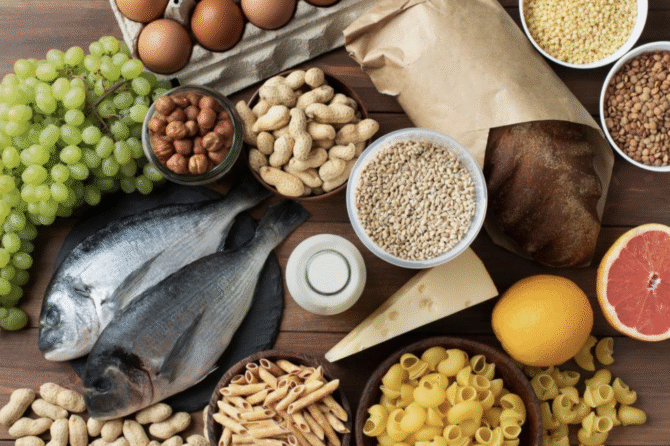
The Effects of a High-Fiber Diet on Anal Health
The Effects of a High-Fiber Diet on Anal Health
A healthy digestive system is one of the most important building blocks of overall quality of life. Anal region health is an inseparable part of this chain. However, most people overlook the role of nutrition in preventing anal diseases. In fact, a fiber-rich diet plays a significant role both in the prevention and treatment of anal problems such as hemorrhoids, anal fissures, and constipation.
In this article, we explain the effects of fiber on the digestive system, bowel habits, and anal health in the light of scientific data.
What Is a High-Fiber Diet?
Fiber is a type of carbohydrate that cannot be digested by the body. It is mostly found in plant-based foods and is divided into two main categories:
- Soluble fiber: Mixes with water to form a gel-like substance. It softens the intestines and facilitates transit. (Oats, apples, carrots)
- Insoluble fiber: Passes through undigested and increases stool volume. Prevents constipation. (Whole wheat, nuts, vegetables)
Recommended Daily Fiber Intake:
~25 grams for women, ~35 grams for men
Effects of Fiber on the Digestive System
Fiber supports the healthy functioning of the digestive system in multiple ways:
- Increases bowel movements: Fiber increases stool volume and supports peristaltic movements (intestinal contractions).
- Softens stool: Especially soluble fibers draw water and balance stool consistency.
- Regulates toilet habits: Enables rhythmic and painless defecation.
- Prevents constipation: Lack of fiber is directly linked to constipation.
Benefits of Fiber for Anal Disorders
Constipation and irregular bowel movements are at the root of many anal diseases. This is where the effect of fiber-rich foods comes into play:
- Preventing Hemorrhoids
Hemorrhoids form when veins in the anal region swell. Constipation, straining, and prolonged time on the toilet increase the risk of hemorrhoids.
Thanks to a high-fiber diet:
- Stool softens
- The need for straining decreases
- Pressure on anal veins is reduced
- Reducing the Risk of Anal Fissures
Anal fissures usually occur when hard stool tears the mucosa of the anus.
Fiber-rich foods significantly reduce this risk. When stool is soft and bulky, there is no traumatic contact.
- Indirect Impact on Abscesses and Fistulas
Constipation may cause microscopic tears, infections, and increase the risk of anal abscesses. A fiber-rich diet breaks this cycle and offers indirect protection.
Which Fiber-Rich Foods Should Be Preferred?
- Whole grains: Oats, whole grain bread, bulgur
- Legumes: Chickpeas, lentils, kidney beans
- Vegetables: Broccoli, zucchini, cabbage
- Fruits: Apples, pears, figs, prunes
- Seeds: Chia, flaxseed
Tip:
Adding just one fiber-rich food to each meal can positively affect stool rhythm.
Things to Watch Out for in a High-Fiber Diet
- Do not increase fiber intake suddenly: May cause gas and bloating.
- Drink plenty of water: Inadequate fluids can further harden the stool.
- Fiber supplements: Prefer natural sources, but supplements may be used with expert advice.
- Special conditions: Personalized diets are required in cases like IBS or diverticulitis.
Nutritional Monitoring in Anal Diseases
At Avrupa Cerrahi, not only surgical interventions but also nutrition-based support programs are carefully implemented.
- Personalized dietary recommendations after hemorrhoid treatment
- Sample constipation-preventive diets for individuals with anal fissures
- Fiber supplementation for postoperative stool control
Schedule an appointment and consult with our experts for a detailed evaluation.
Leave a reply
Leave a reply